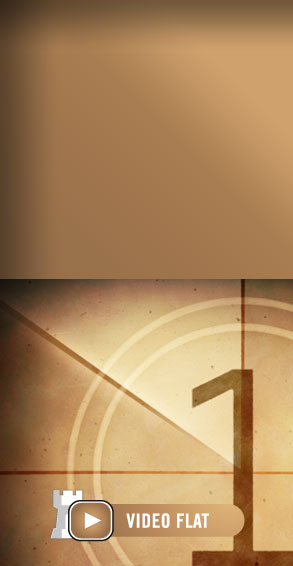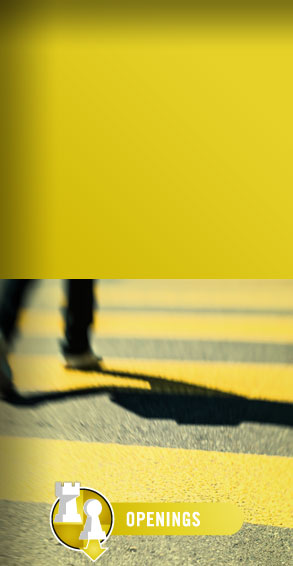Amateurs beat GMs in PAL / CSS Freestyle
We are delighted to bring you a full report and analysis from the team that
won the first CSS-PAL Freestyle chess tournament. Everyone was stunned when
it turned out that the winners weren't GMs but a pair of modestly rated amateurs
from New
England! They won the $10,000 first prize. Our hearty congratulations to
them both. Here is the full story in their own words.
Team ZackS
Zackary Stephen
Steven Cramton
Zackary Stephen - 1381 USCF
Ongoing Chess website on Pirc defense and other openings:
http://alumni.plymouth.edu/~zrstephen02/home.htm
Education: MS of Statistics
Current occupation: Database administrator Zack is 24 years old and lives in
central New Hampshire.
Steven Cramton - 1685 USCF
Is twenty eight years old and lives in central New Hampshire. He works at the
New Hampton Preparatory School as a Soccer Coach in the fall and he runs the
Schools Snowboarding program in the winter. In the spring he also coaches a
small competitive chess team. Steven has been playing chess for approximately
9 years and his favorite players include Kasparov, Anand, Topalov, Alexei Shirov,
Judit Polgar and Magnus Carlsen. Aside from chess his interests include photography,
cycling, music & motion pictures, snowboarding and motorcycles.

And the winners are....: Zack Stephen and Steven Cramton
Hardware
1. Dell Pentium 4 @2.8 GHz 512MB RAM
2. Dell Pentium 3 @1.6 GHz 256MB RAM
3. AMD 3200+
Computer specs:
HP AMD 3200+ 64 bit computer. 384 ram All 5 piece tablebases and 15gig of selected
6piece tablebases, usually running Fritz 8 or Junior 7.
Dell Intel Pentium 2.8 no HT 512 ram, all 5 piece tablebases, usually running
Shredder 8.
Dell Intel Pentium 1.6 256 ram, no tablebases, usually Running Junior 7.
Chess Software
Shredder 8
Fritz 8
(Junior 7)
(Gambit Tiger)
Endgame table-base with 5-piece endings
Shredder 8 and Fritz 8 were the main focal engines used for consultation (As
well as Junior 7 and Gambit Tiger on very rare occasions). We also used a database
for some statistical research and opening analysis. Opening selection was based
on our own preference and personal repertoires. As white we played mainly 1.e4
and strictly Grunfeld when facing 1.d4.
The Dark Horse Theory
Just to set the record straight, we did not have the help of any GM’s,
IM’s or any titled players or any other players for that matter. However
I should note that it is sincerely flattering to read that some people perhaps
thought that Garry Kasparov or other Grandmasters might have played a part on
our team.
From the start Zack and I chose to remain anonymous for the pure reason of
wanting our competitors to take us seriously…
I think that we have always had a slightly different approach to chess then
most others and we are not afraid to condemn certain respected positions after
extensive analysis and we often find ourselves searching for the truth of many
different openings. We are both very passionate about this and despite our low
tournament ratings we are actually, at times, able to create surprisingly good
chess on our own even without computer assistance.
I can remember recently posting a controversial bust to a line in the Sicilian
Dragon (Yugoslav Attack) on a chess website. People were really upset with me
because I didn’t want to reveal the promising line for White. I was actually
hoping to use my novelty in this tournament but never got the chance. They couldn’t
believe that someone from New Hampshire even knew how to play chess!
I certainly didn’t want this attitude from any of our competitors...
We decided it was best to let our chess do the talking. On a last note: Everything
that we have written is 100% true.
Move selection
Candidate moves were usually chosen based on our own experience in certain
types of positions or by the consensus of the computer engine programs. Once
we established our possible candidate moves (usually three or less, but sometimes
more) we began to investigate the lines extensively. Zack would analyze a few
lines and I would analyze a couple of different lines. When either of us found
a strong continuation we then looked at it together, comparing the lines between
the different engines (mainly between Shredder 8 and Fritz 8).
I believe this method of move selection, along with our opening preparation
and specific knowledge of the chess playing programs that we used, provided
us with a solid foundation in which to move forward during our games.
However I would also like to add that I am extremely proud of the way we played,
this was by no means an easy ride for us. There were many times that we had
to play creatively in order to solve specific problems or to tackle certain
opponents. With a few exceptions we always played for the win and after each
game we were both physically and mentally exhausted.
Strengths & Weaknesses
Our main strengths included extensive opening preparation, extensive knowledge
of each chess engine used and how they evaluate certain types of positions as
well as extensive database knowledge. Move selection criteria and an ability
to surpass the horizon effect which seems to be the major weakness of most,
if not all, chess playing programs.
Our main weaknesses shown through in extremely complex positions… as
it was often not easy or even possible to solve some of the problems we faced
with the rather short time control. A good example of this can be found in our
match against Rentner2. Before this match even started we had it in our minds
that we were paired with Volkov. Only minutes before our match started did we
learn that we would be playing Rentner2. We knew that he played 2.c3 very well
against our Sicilian and we were planning to prepare for this line from the
Black side, especially for him!
Unfortunately, with 5 minutes until the game started we didn’t have time.
In this game (game two of our match) we could not come to a clear conclusion
of 14…b5. We spent a lot of time looking at the possible Knight sac on
b5 and the passed pawns he got in return (not to mention our lack of development).
In the game continuation we opted for 15…Bd5? And soon we were on the
edge of defeat, probably even lost.
In the very next game we had him on the ropes after he repeated the same opening
from game 1. And again we had a decision to make… after a little arguing
we failed to find the best continuation and the game soon became dead level
after only a few moves. This was very unfortunate for us because he had so little
time remaining on his clock. In game four we switched defenses and opted for
2…Nf6 instead of 2…d5 and we were eventually able to win the game.
For more information we have included all of our games from the tournament,
from the qualifying rounds all the way through the final. We have each briefly
annotated some games from the tournament.(Download
the ZackS team games in CBV format.)
Zack and I would both like to publicly thank the organizers of this event and
the chess fans who followed us throughout this tournament.
We would also like to thank our closest friends and family for their support.
Special thanks to my father Bill Cramton for the use of his computer and Zack's
parents for the air conditioner!
Replay this decisive game between
ZackS and V. Dobrov
ZackS (1936) - V_Dobrov (1810) [B87]
Rated game, 60m + 15s CSS PAL Freestyle Tournament, 19.06.2005
[Stephen, Zackary]
Before I get into the game notes, I'd like to explain the circumstances
leading up to this game. This was the third game of the finals match vs. Vladimir.
We had white in our first game vs. him, but only managed a draw due to Vladimir's
skillful move order of the Sicilian Bg5 Najdorf. To my knowledge, the only way
to take advantage of 7...Qc7 which he played, is to play the bishop sacrifice
on b5 as we did in the game, however at the board we could not find anything
better than the endgame we reached in the game, which was probably only a draw.
Therefore, after drawing our second game with black, we had the white pieces
again and had to make a choice of how to play for a win.
Since we had no solution to his move order against Bg5, we had to switch to
our backup opening against the Najdorf, the Sozin. In our preparation for this
match, we were not expecting to see the Najdorf, as Vladimir usually plays the
classical or Sveshnikov Sicilian according to the ChessBase database. So when
the Najdorf arose on the board the first game and then in the third game, we
knew it would not be wise to repeat the Bg5 line because he was obviously using
preparation just for us. However, although Vladimir won the opening battle in
our first game, he had no idea we were going to play the Sozin in the second,
or more importantly that I had played hundreds of games in the engine room with
it, testing out ideas.
Zack and Steve - VDobrov (GM Vladimir Dobrov) [B87]
CSS Freestyle tournament Finals (Game 3)
Playchess Server
[Stephen, Zackary]
1.e4 c5 2.Nf3 d6 3.d4 cxd4 4.Nxd4 Nf6 5.Nc3 a6 6.Bc4 e6 7.Bb3 Just a
little nuance about this position: normally I play 7.0-0 here as it limits black's
options to Be7 or b5. Be7 is not an easy move to get an advantage against in
my opinion; however I consider it easier to deal with than 7.Bb3 Nbd7. Most
of my analysis from my Playchess engine matches was based on 7...b5, so our
challenge was to play the move which we thought he would most likely respond
with 7...b5.
Of course only after the match did we find out that Vladimir was working with
someone else, but before the game when we decided to play the Sozin, we felt
that given that Vladimir was not a usual Najdorf player, he would most likely
go into the main line without hesitating too much if we played the normal move
7.Bb3, whereas if we played a somewhat less played move 7.0-0, he might start
to think about it and play the 7...Be7 move. It would be interesting to hear
our opponent's thoughts at this juncture...
7...b5 8.0-0 Be7 9.Qf3 Qc7 Even though we could not see Vladimir or
his expressions, the fact that he blitzed out the first five-six moves, but
was now spending at least 2-3 minutes per move, told us he was not fully prepared
for this line. Also, as many know, 9...Qb6 is a more double edged move(better
than Qc7 in my opinion), and by him not playing it, told us he was possibly
just playing to just get to a middle game position. 10.Qg3 0-0 11.Bh6 Ne8
12.Rad1 Bd7 13.f4 Nc6 14.Nxc6 Bxc6 15.f5 Kh8
 16.f6
Up until this move, you could find this position in the opening books as
okay for black, because white usually retreated the bishop to e3. This move,
16.f6, which I found played in a correspondence game several months ago, gives
black many tactical and positional problems to solve. Since we were still in
my preparation, we had actually gained 2 minutes on the clock since the game
started, whereas Vladimir had roughly 54 minutes left.
16.f6
Up until this move, you could find this position in the opening books as
okay for black, because white usually retreated the bishop to e3. This move,
16.f6, which I found played in a correspondence game several months ago, gives
black many tactical and positional problems to solve. Since we were still in
my preparation, we had actually gained 2 minutes on the clock since the game
started, whereas Vladimir had roughly 54 minutes left.
16...gxh6 17.fxe7 Qxe7 18.Qf4 The first new move not in my preparation.
I had prepared Qe3, but on double checking, we found that Qf4 kept black's rook
off of g8, which seemed to be his only method of obtaining counter play.
18...b4 At this point before he made this move, we could not find one
move which helped black's position. The candidate moves by the computer, f5,
a5 and others, all didn't solve the many weaknesses around black's king and
in the center. Its possible that black is already lost here from a practical
point of view.
19.Ne2 e5 Again it's not easy to suggest black's moves. We were expecting
19.Bb5 which was one of the top moves by Fritz and Shredder, although in reality
if black ever exchanges his bishop for our knight, the position only gets worse
for him by principle.
20.Qxh6 f5 21.Rxf5 Rxf5 22.exf5 Nf6 23.Qe3 We spent some time on 23.h3
which was almost universally the top engine move. However we felt that Qe3 made
him displace his queen in order to advance his center pawns, which was the only
strategy that made sense for him.
23...Qc7 24.h3 d5 25.g4 At this point, Vladimir had caught up on time,
because we were using our time advantage to probe into the position and understand
some subtleties about what plans seemed to work, and others that didn't.
25...a5 26.c3 a4 27.Bc2 a3 In hindsight, opening up this side of the
board enabled us to exploit his hanging pawns better because we could attack
them from either side. However during the game this wasn't clear, especially
because Fritz 8 calculates slightly better for black.
28.bxa3 bxc3 29.Qxc3 Qb6+ 30.Kf1 d4 31.Qb3 Qc5 32.Rc1 Bd5 33.Qb4 Qc6 34.Bd3
Qd7 After this move, you can see with almost any engine, white is winning
by force.
35.Qb6 Qe7 36.Rc7 Qd8 37.Qc5 h6 38.a4 Rb8 39.Bb5 h5 40.g5 Ne4 41.Qe7 Qxe7
42.Rxe7 Nxg5 43.Rxe5 Rd8 44.Nxd4 Kg7 45.h4 Nf7 46.Re6 Bxa2 47.Rg6+ Kf8 48.Ne6+
Bxe6 49.fxe6 Nd6 50.Bd7 Ke7 51.Rg7+ Kf6 52.Rh7 Kg6 53.Rf7 Rb8 54.Rf4 Rb1+ 55.Ke2
Rb2+ 56.Kd3 Rb1 57.Kd4 Rd1+ 58.Ke5 Black Resigned. 1-0
After this win, Vladimir had to win the next to force a tie break. To do so
he played an unusual variation against our Gruenfeld, which we were able to
solve to obtain a position which Fritz 8 evaluated as slightly better for us.
Therefore he offered us a draw which gave us the victory. 1-0
Previous reports



















 16.f6
Up until this move, you could find this position in the opening books as
okay for black, because white usually retreated the bishop to e3. This move,
16.f6, which I found played in a correspondence game several months ago, gives
black many tactical and positional problems to solve. Since we were still in
my preparation, we had actually gained 2 minutes on the clock since the game
started, whereas Vladimir had roughly 54 minutes left.
16.f6
Up until this move, you could find this position in the opening books as
okay for black, because white usually retreated the bishop to e3. This move,
16.f6, which I found played in a correspondence game several months ago, gives
black many tactical and positional problems to solve. Since we were still in
my preparation, we had actually gained 2 minutes on the clock since the game
started, whereas Vladimir had roughly 54 minutes left. 




